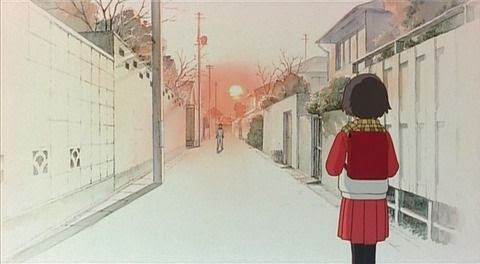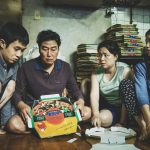For me, the hallmark of Ghibli Studio films is this: they transcend age limits and reward countless rewatches.
Their pacing is slow, almost touching the deep-seated fear of time slipping away within us all. Only Yesterday delves into that theme. Yet it remains quintessentially Ghibli by not chasing lofty exteriors before plumbing the depths of the inner world.
Only Yesterday (おもひでぽろぽろ, Omohide Poro Poro, lit. “memories pouring down”) is a 1991 animated film directed by Isao Takahata, based on the manga by Okamoto Hotaru and Tone Yuko. Produced by Toshio Suzuki and crafted by Studio Ghibli, it premiered on July 20, 1991.
The ending theme (愛は花、君はその種子, Ai wa Hana, Kimi wa sono Tane, lit. “Love is a flower, you are its seed”) is a Japanese rendition of Amanda McBroom’s “The Rose.”
Only Yesterday stands out among progressive animated films for exploring a genre thought beyond animation’s usual scope—here, a realistic drama for adults, especially women. Still, it surprised with success, drawing a wide adult audience of both genders.
Taeko is a grown woman in bustling, cramped Tokyo. Seeking respite, she heads to the countryside for a vacation, craving its open, freeing air. This trip isn’t just physical—it quietly restarts memories from her fifth-grade days.
Back then, Taeko’s experiences were simple: outings, tasting pineapple, puberty’s woes, first crushes, making and losing friends, school struggles, and a fleeting dream of the stage.
What seems random isn’t truly so in the usual sense. Taeko’s nostalgia isn’t sudden; she’s unconsciously filling gaps in her past. Her recalled moments are carefully chosen, yet fearing her mind might dismiss or over-explain them, her heart opts for an indirect path—confronting herself through yesterday.
The Truest Days of Childhood
Adult Taeko wouldn’t do this—she’s used to accepting, living faintly within that acceptance, embracing her sleepwalker state: eyes open yet asleep, eyes closed yet awake.
Her childhood unfolds in a typical middle-class family, tinged with her father’s stern control. He speaks least, commanding obedience with few words. Her mother, grandmother, and two older sisters adapt; naturally, Taeko does too—though young Taeko doesn’t grasp why. When denied her dream of acting, her emotions begin to bottle up.
This upbringing isn’t terrible—it doesn’t turn Taeko or her sisters cruel. But is it good? Adult Taeko’s life answers: always yearning to escape her birthplace.
She doesn’t hate her family, but with them, she can’t be herself or live as she wishes.
Meeting Toshio marks a turning point for Taeko, though it’s an ordinary day for him (he even dozes off picking her up at the station). That ordinariness might be what she craves, letting her open up to him easily.
The ending I’ll leave to your imagination, but for me, the best part of any film—especially Ghibli’s—is the journey there.
Only Yesterday doesn’t weave fairy tales; it unearths the childhood within us: people walking the earth beneath the sky. Whether dreams are reached or not, childhood glows with the pure belief that anything is possible.
In Place of a Conclusion
The film flows smoothly, though one detail nags at me: Does Taeko unite with Toshio out of love? And does Toshio love her?
From family hints, they see Taeko as a potential daughter-in-law—praised yet appraised as an extra worker, unapologetically. For Toshio, does he need a girl who gets him, or one willing to stay rural so he can chase Tokyo?
Life rolls on with choices, trade-offs, and balances. It seems only memories like those in Only Yesterday bring untainted joy.
“If we fear parting, our hearts will never dance.”
In the end, they both find answers. The train departs, the car moves forward. Past, present, and future merge into one: Taeko’s heart.















